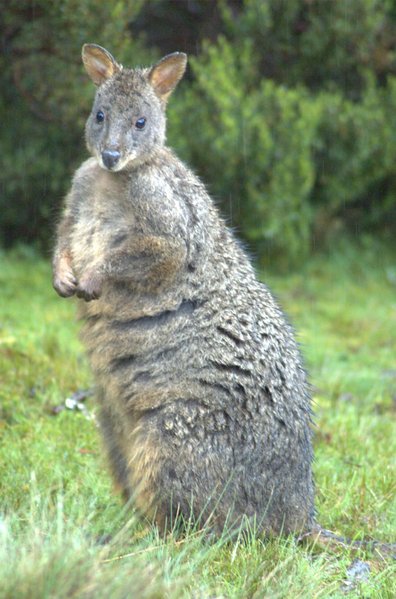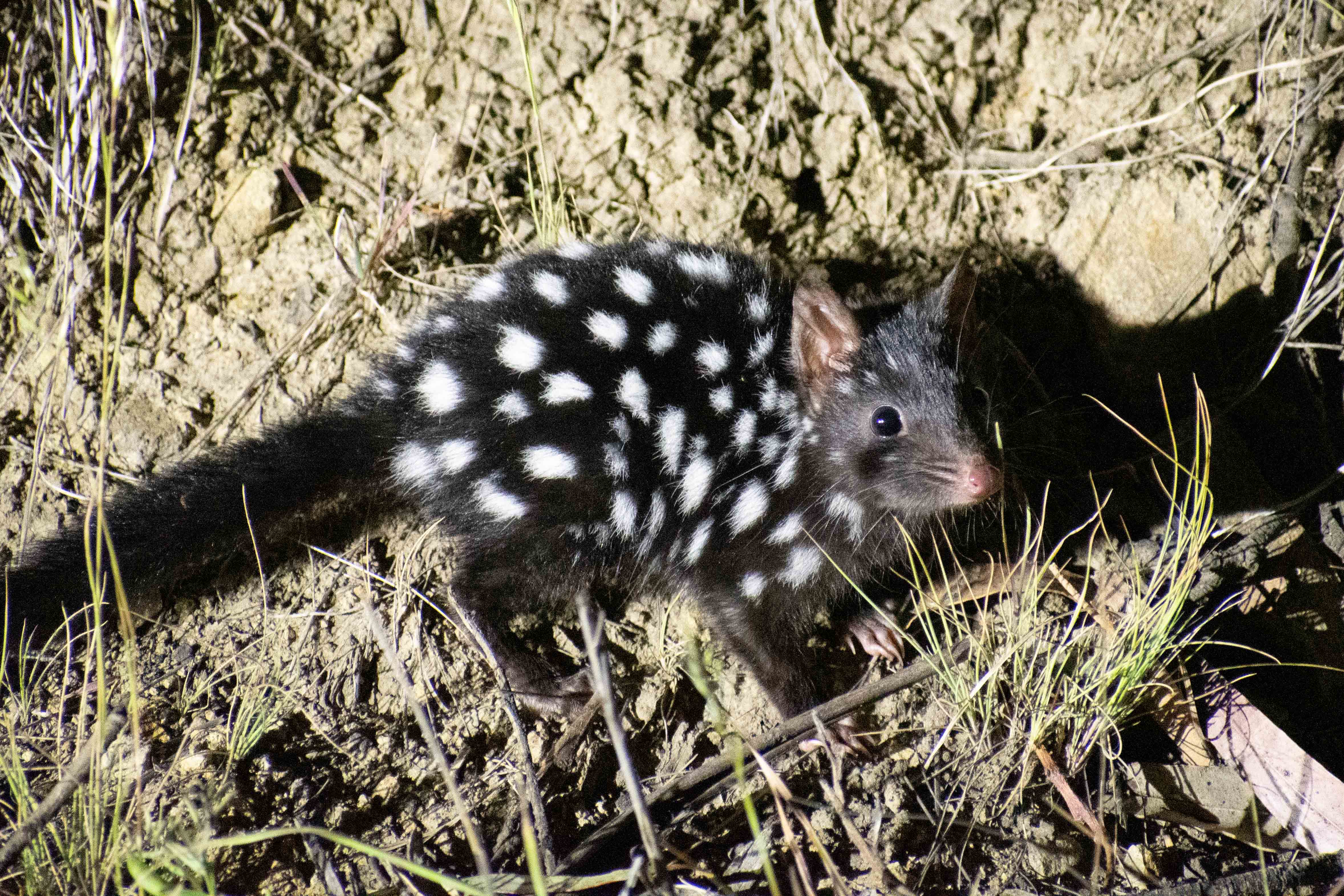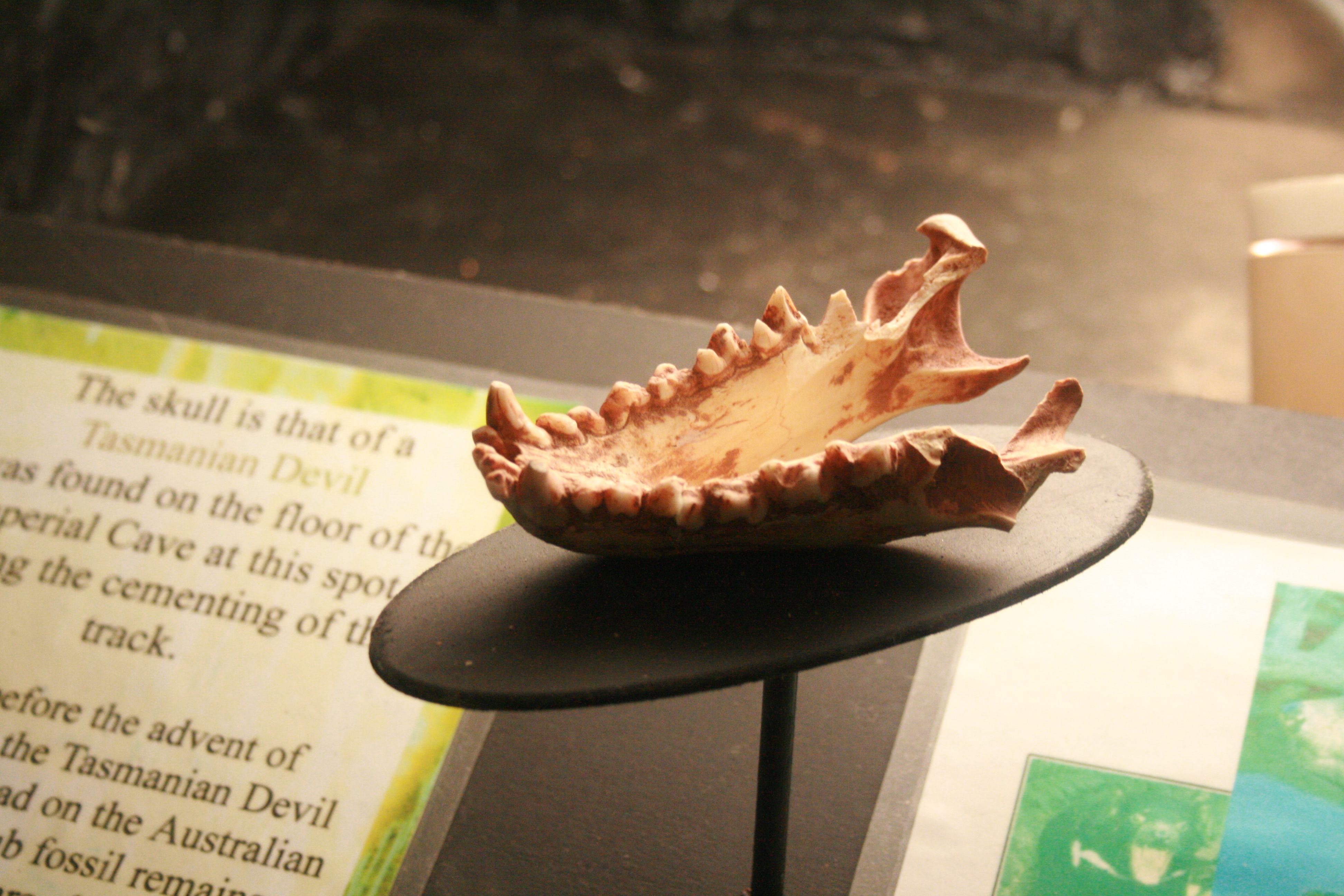|
Narawntapu National Park
Narawntapu National Park (formerly known as Asbestos Range National Park) is a national park in the Australian state of Tasmania. It lies on Tasmania's north coast, adjoining Bass Strait, between Port Sorell in the west and the mouth of the Tamar River in the east. It lies about 20 km east of Devonport, 60 km north-west of Launceston and 250 km north of Hobart. Narawntapu encompasses islands in the Port Sorell estuary and the Carbuncle, as well as land extending to low water mark, including intertidal mudflats. The highest point of the park is 392 m ASL. It is listed on Australia's Register of the National Estate.Anon. (2000). ''Narawntapu National Park, Hawley Nature Reserve - Management Plan 2000''. Parks and Wildlife Service, Tasmania. PDF download Narawntapu is popular with visitors, with many coming from the tourist centres of Devonport and Port Sorell. The visitor centre is located in an area known as Springlawn, where visitors can see Forester k ... [...More Info...] [...Related Items...] OR: [Wikipedia] [Google] [Baidu] |
Port Sorell, Tasmania
Port Sorell is a town on the north-west coast of Tasmania, Australia. It is on the waterway of the same name, just off Bass Strait, 20 km east of Devonport and close to Shearwater and Hawley Beach. It borders the Rubicon Estuary, which has been identified by BirdLife International as an Important Bird Area because of its importance for waders, especially pied oystercatchers. History The area was named Panatana by local Aborigines. The town was originally a fishing and sealing port named ''Burgess'', however the name was officially changed to Port Sorell (after Governor Sorell) in 1822. The town could have been a lot larger than it is now, had it not been for bushfires, after which nearby Devonport grew to become a major port. At the , Port Sorell had a population of 2,221. Today Port Sorell is one of many popular holiday spots along the north coast of Tasmania. The first Port Sorell Post Office opened on 1 February 1845 and closed in 1863. The current office opene ... [...More Info...] [...Related Items...] OR: [Wikipedia] [Google] [Baidu] |
Tasmanian Languages
The Tasmanian languages were the languages indigenous to the island of Tasmania, used by Aboriginal Tasmanians. The languages were last used for daily communication in the 1830s, although the terminal speaker, Fanny Cochrane Smith, survived until 1905. History of research Tasmanian languages are attested by three dozen word lists, the most extensive being those of Joseph Milligan and George Augustus Robinson. All these show a poor grasp of the sounds of Tasmanian, which appear to have been fairly typical of Australian languages in this parameter. Plomley (1976) presents all the lexical data available to him in 1976. Crowley and Dixon (1981) summarise what little is known of Tasmanian phonology and grammar. Bowern (2012) organises 35 different word lists and attempts to classify them into language families. Fanny Cochrane Smith recorded a series of wax cylinder recordings of Aboriginal songs, the only existing audio recording of a Tasmanian language, though they are of ext ... [...More Info...] [...Related Items...] OR: [Wikipedia] [Google] [Baidu] |
Spotted-tail Quoll
The tiger quoll (''Dasyurus maculatus''), also known as the spotted-tail quoll, the spotted quoll, the spotted-tail dasyure, native cat or the tiger cat, is a carnivorous marsupial of the quoll genus '' Dasyurus'' native to Australia. With males and females weighing around , respectively, it is the world's second-largest extant carnivorous marsupial, behind the Tasmanian devil. Two subspecies are recognised; the nominate is found in wet forests of southeastern Australia and Tasmania, and a northern subspecies, ''D. m. gracilis'', is found in a small area of northern Queensland and is endangered. Taxonomy The tiger quoll is a member of the family Dasyuridae, which includes most carnivorous marsupial mammals. This quoll was first described in 1792 by Robert Kerr, the Scottish writer and naturalist, who placed it in the genus '' Didelphis'', which includes several species of American opossum. The species name, ''maculatus'', indicates this species is spotted. Two subspecies ... [...More Info...] [...Related Items...] OR: [Wikipedia] [Google] [Baidu] |
Eastern Quoll
The eastern quoll (''Dasyurus viverrinus'', formerly known as the eastern native cat) is a medium-sized carnivorous marsupial ( dasyurid), and one of six extant species of quolls. Endemic to Australia, they occur on the island state of Tasmania, but were considered extinct on the mainland after 1963. The species has been reintroduced to fox-proof fenced sanctuaries Victoria in 2003 and to the Australian Capital Territory in 2016. Taxonomy The eastern quoll is a member of the family Dasyuridae, which includes most carnivorous marsupials. Its species name, ''viverrinus'', indicates it is "ferret-like". There are no recognised subspecies. Description Eastern quolls are about the size of a small domestic cat, with adult males measuring in total length, including the tail, and having an average weight of . Females are significantly smaller, measuring , including a tail, and weighing around . They have a tapering snout, short legs, and erect ears. They can be distinguishe ... [...More Info...] [...Related Items...] OR: [Wikipedia] [Google] [Baidu] |
Tasmanian Devil
The Tasmanian devil (''Sarcophilus harrisii'') (palawa kani: purinina) is a carnivorous marsupial of the family Dasyuridae. Until recently, it was only found on the island state of Tasmania, but it has been reintroduced to New South Wales in mainland Australia, with a small breeding population. The size of a small dog, the Tasmanian devil became the largest carnivorous marsupial in the world following the extinction of the thylacine in 1936. It is related to quolls, and distantly related to the thylacine. It is characterised by its stocky and muscular build, black fur, pungent odour, extremely loud and disturbing screech, keen sense of smell, and ferocity when feeding. The Tasmanian devil's large head and neck allow it to generate among the strongest bites per unit body mass of any extant predatory land mammal. It hunts prey and scavenges on carrion. Although devils are usually solitary, they sometimes eat and defecate together in a communal location. Unlike most other da ... [...More Info...] [...Related Items...] OR: [Wikipedia] [Google] [Baidu] |
Common Wombat
The common wombat (''Vombatus ursinus''), also known as the coarse-haired wombat or bare-nosed wombat, is a marsupial, one of three extant species of wombats and the only one in the genus ''Vombatus''. The common wombat grows to an average of long and a weight of . Taxonomy The common wombat was first described by George Shaw in 1800. There are three extant subspecies: *Bass Strait (common) wombat (''V. u. ursinus''), the nominate form, was once found throughout the Bass Strait Islands, but is now restricted to Flinders Island to the north of Tasmania. Its population was estimated at 4,000 in 1996 and is listed as vulnerable by the Environment Protection and Biodiversity Conservation Act 1999 and IUCN Red List. *Hirsute wombat (''V. u. hirsutus'') is found on the Australian mainland. *Tasmanian wombat (''V. u. tasmaniensis'') is found in Tasmania. It is smaller than ''V. u. hirsutus''. Hackett's wombat (''V. hacketti'') is an extinct species of genus ''Vombatus'', inha ... [...More Info...] [...Related Items...] OR: [Wikipedia] [Google] [Baidu] |
Marsupial
Marsupials are any members of the mammalian infraclass Marsupialia. All extant marsupials are endemic to Australasia, Wallacea and the Americas. A distinctive characteristic common to most of these species is that the young are carried in a pouch. Marsupials include opossums, Tasmanian devils, kangaroos, koalas, wombats, wallabies, bandicoots, and the extinct thylacine. Marsupials represent the clade originating from the last common ancestor of extant metatherians, the group containing all mammals more closely related to marsupials than to placentals. They give birth to relatively undeveloped young that often reside in a pouch located on their mothers' abdomen for a certain amount of time. Close to 70% of the 334 extant species occur on the Australian continent (the mainland, Tasmania, New Guinea and nearby islands). The remaining 30% are found in the Americas—primarily in South America, thirteen in Central America, and one species, the Virginia opossum, in Nort ... [...More Info...] [...Related Items...] OR: [Wikipedia] [Google] [Baidu] |
Phylloglossum
''Phylloglossum'', a genus in the clubmoss family Lycopodiaceae, is a small plant superficially resembling a tiny grass plant, growing with a rosette of slender leaves 2–5 cm long from an underground bulb-like root. It has a single central stem up to 5 cm tall bearing a spore-producing cone at the apex, and was previously classified variously in the family Lycopodiaceae or in its own family the Phylloglossaceae, but recent genetic evidence demonstrates it is most closely related to the genus '' Huperzia'' and is a sister clade to the genus '' Phlegmariurus'', which was formerly included in ''Huperzia''. Morphological characters, as well as molecular characters based on ''rbc''L data, support the close relationship of ''Phylloglossum'' to ''Huperzia''. Similarities in spore morphology, sporangial epidermis morphology, phytochemistry, and chromosome number indicate that ''Phylloglossum'' and ''Huperzia'' are closely related. A morphological character that complicates ... [...More Info...] [...Related Items...] OR: [Wikipedia] [Google] [Baidu] |
Salt Marsh
A salt marsh or saltmarsh, also known as a coastal salt marsh or a tidal marsh, is a coastal ecosystem in the upper coastal intertidal zone between land and open saltwater or brackish water that is regularly flooded by the tides. It is dominated by dense stands of salt-tolerant plants such as herbs, grasses, or low shrubs. These plants are terrestrial in origin and are essential to the stability of the salt marsh in trapping and binding sediments. Salt marshes play a large role in the aquatic food web and the delivery of nutrients to coastal waters. They also support terrestrial animals and provide coastal protection. Salt marshes have historically been endangered by poorly implemented coastal management practices, with land reclaimed for human uses or polluted by upstream agriculture or other industrial coastal uses. Additionally, sea level rise caused by climate change is endangering other marshes, through erosion and submersion of otherwise tidal marshes. However, r ... [...More Info...] [...Related Items...] OR: [Wikipedia] [Google] [Baidu] |
Grassland
A grassland is an area where the vegetation is dominated by grasses (Poaceae). However, sedge (Cyperaceae) and rush ( Juncaceae) can also be found along with variable proportions of legumes, like clover, and other herbs. Grasslands occur naturally on all continents except Antarctica and are found in most ecoregions of the Earth. Furthermore, grasslands are one of the largest biomes on earth and dominate the landscape worldwide. There are different types of grasslands: natural grasslands, semi-natural grasslands, and agricultural grasslands. They cover 31–69% of the Earth's land area. Definitions Included among the variety of definitions for grasslands are: * "...any plant community, including harvested forages, in which grasses and/or legumes make up the dominant vegetation." * "...terrestrial ecosystems dominated by herbaceous and shrub vegetation, and maintained by fire, grazing, drought and/or freezing temperatures." (Pilot Assessment of Global Ecosystems, 2000) * " ... [...More Info...] [...Related Items...] OR: [Wikipedia] [Google] [Baidu] |
Woodland
A woodland () is, in the broad sense, land covered with trees, or in a narrow sense, synonymous with wood (or in the U.S., the '' plurale tantum'' woods), a low-density forest forming open habitats with plenty of sunlight and limited shade (see differences between British, American, and Australian English explained below). Woodlands may support an understory of shrubs and herbaceous plants including grasses. Woodland may form a transition to shrubland under drier conditions or during early stages of primary or secondary succession. Higher-density areas of trees with a largely closed canopy that provides extensive and nearly continuous shade are often referred to as forests. Extensive efforts by conservationist groups have been made to preserve woodlands from urbanization and agriculture. For example, the woodlands of Northwest Indiana have been preserved as part of the Indiana Dunes. Definitions United Kingdom ''Woodland'' is used in British woodland management t ... [...More Info...] [...Related Items...] OR: [Wikipedia] [Google] [Baidu] |
Sclerophyll
Sclerophyll is a type of vegetation that is adapted to long periods of dryness and heat. The plants feature hard leaves, short internodes (the distance between leaves along the stem) and leaf orientation which is parallel or oblique to direct sunlight. The word comes from the Greek ''sklēros'' (hard) and ''phyllon'' (leaf). The term was coined by A.F.W. Schimper in 1898 (translated in 1903), originally as a synonym of xeromorph, but the two words were later differentiated. Sclerophyllous plants occur in many parts of the world, but are most typical of areas with low rainfall or seasonal droughts, such as Australia, Africa, and western North and South America. They are prominent throughout Australia, parts of Argentina, the Cerrado biogeographic region of Bolivia, Paraguay and Brazil, and in the Mediterranean biomes that cover the Mediterranean Basin, California, Chile, and the Cape Province of South Africa. In the Mediterranean basin, holm oak, cork oak and olives are ty ... [...More Info...] [...Related Items...] OR: [Wikipedia] [Google] [Baidu] |






_(white_background).jpg)

